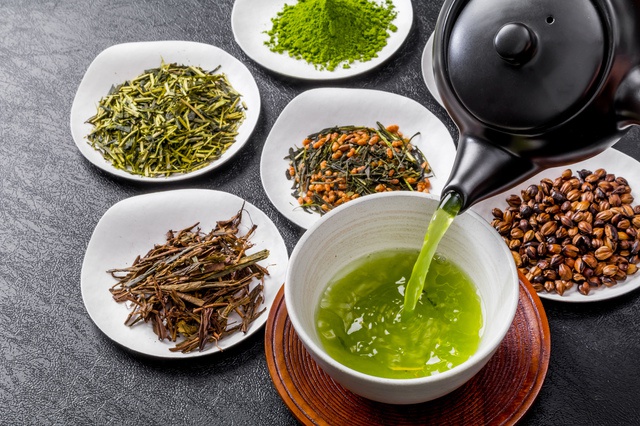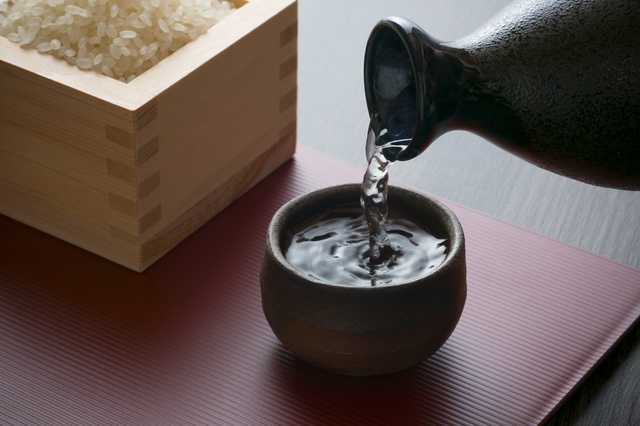
20 Kyoto Souvenirs You Should Definitely Buy (2023 Edition)
Kyoto is a city renowned around the world as a sightseeing area as well as one of the best places to shop for souvenirs in Japan. In this article, we'll introduce a list of 20 best souvenirs you should definetely buy when visiting Kyoto, from traditional goods to matcha snacks, and gorgeous kimono.
This post may contain affiliate links. If you buy through them, we may earn a commission at no additional cost to you.
A lot of foreign tourists visit the town full of an exotic atmosphere every year, and we would like to introduce you the must-buy souvenirs in Kyoto.
1. Fushimi Inari's torii
Fushimi Inari Shrine's thousand gates have become world-famous due to it being featured in movies and magazines. In recent years, an extremely large number of foreign tourists have come to the shrine with the goal of seeing this mysterious scenery. Actually, you can buy a mini version of the torii gates as a souvenir. Wouldn't this be one of the best souvenirs if you manage to come to Kyoto?
Fushimi Inari Shrine Official Website: http://inari.jp/
Our Top Tips
JR Pass for Whole Japan
Explore Japan in the most convenient and economical way with a Japan Rail Pass! It is valid for the majority of railways and local buses operated by JR.
2. Limited edition Kyoto Kit-Kats
This Houji-cha (roasted green tea) Kat-kat is a collaboration between Japan's long-standing shop Itoh Kyuemon and Nestle Japan. You can only find it in Kyoto so it's a must-have souvenir.
Website: https://d.nestle.jp/kitkat/omiyage/kk_itoh_houjitya.html (Japanese Only)
3. Kyo-Kiyomizu Ware

4. Kyoto doll
"Kyoto doll" is a general term for a high-class Japanese doll traditionally created in the Kyoto area. Craftsmen of the area created the dolls as playthings for aristocrats' daughters in the Heian era, and they became highly prized as souvenirs in the Edo period.
Kyoto is famous for being a doll-production area that has more than 1000 years of history. The elaborate kimono-wearing Kyoto dolls hold high artistic merit. You can see many dolls at the Kyoto Handicraft Center.
5. Japanese knives
Japanese knives are popular among foreign tourists thanks to their sharpness and their beauty. Japanese knives are made the same way as Japanese swords. It's said that ingredients that are cut with a well-sharpened Japanese knives have stiff angles and the cut ends are glazed. It's also said that chefs from foreign Michelin-starred restaurants always buy a bunch of Japanese knives when they visit.
It's said that great numbers of blacksmiths live in Kyoto, but among them the representative is Aritsugu, which was estalished in the year 1560. It's famous for being not just one of Japan's prominent blacksmiths but also for being the Imperial Household's blacksmith for the old imperial palace in Kyoto. At Aritsugu, you can get a Japanese knife engraved with a message, so it's ideal as a souvenir.
6. Oil-blotting sheets
These oil-blotting sheets are made from washi (Japanese paper) and are made to remove oil from one's face. It's become a standard souvenir for foreign tourists to Japan. It being made from washi gives it a Japanese image but also its usefulness is what makes it popular. The brand in the photo, Yo-jiya, is a famous long-standing shop, and the main store in Kyoto has been flourishing thanks to large numbers of foreign tourists.
7. Oilpaper umbrella
Bangasa (oilpaper umbrellas) are a type of Japanese umbrella that makes the best of bamboo and washi paper. It's a characteristic umbrella that's made using tough bones for a strong structure.
While the Japanese design is wonderful, practical bangasa are sold at a moderate price, making it perfect as a souvenir. This photo is from Japan's oldest Japanese umbrella store, Tsujikura, which has been in business since 1690.
8. Kimono, yukata
This is surely one of Japan's standard items. Yukata are also useful as a daily item. It's made with breathable fabric, and it's can be comfortable casual wear. There are many stores in Kyoto where you can rent yukata or kimono, so if you get the chance, please try wearing one.
Website: http://ikebe-kimono.jp/ (Japanese Only)
Our Top Tips
Japan Shinkansen, Narita Express (N'EX) & Express Train Tickets
Plan ahead by booking your shinkansen, airport train, and express train tickets online in English. Have the tickets sent to you by mail or collect them at the station once you're in Japan.
9. Traditional Japanese wagashi sweets
The photo shows aruheitou (toffee) amezaiku (candy shaped to look like living things) that looks like a jewel. Candy like this is popular because it lasts for days and is so beautiful it feels like a waste to eat it.
Website:
The famous wagashi yatsuhashi was invented in Kyoto, and you can also find a great variety of other sweets, so why don't you try buying some?
Website: https://www.8284.co.jp/ (Japanese Only)
10. Japanese green tea

PIXTA
Kyoto's Uji area is known as an area where high quality teas like sencha, gyokuro, tencha, and matcha are produced. It's said that the modern ways of tea cultivation and production that have spread out to all parts of Japan were mostly developed in Uji.
11. Pickled vegetables
Shibatsuke is one of Kyoto's big three types of pickled vegetables. Eggplants and cucumbers are shredded and pickled in salt along with red shiso leaves to create this traditional Kyoto side dish. It has a mild acidity similar to yogurt, making it rather addicting.
Website: http://www.doishibazuke.co.jp/ (Japanese Only)
12. Seven spice blend
Shichimitougarashi is a 7 spice blend primarily using togarashi red peppers, and is used on dishes like udon, miso soup, pickles, yakitori, and other Japanese dishes. There are even people who love this spice blend so much they walk around with their own containers.
The picture shows the 7 spice blend from Shichimi ya honpo, a well-established store near Kiyomizudera.
This is definitely an item people who make Japanese food at home or often go to Japanese restaurants in their own country would love.
13. Camellia oil
Camellia oil is the general term for the plant-based oil that is harvested from the seeds of the camellia flower. It's a natural hair and skincare oil as well as a cooking oil that has been loved in Japan for more than 1000 years, since the Heian era.
The photo shows the camellia oil sold at the women's hair accessories store Kazurasei. It's organic and is recommended for use to relax from the daily tiredness of life because of its theraputic aroma. It's a popular souvenir for women.
14. Wooden comb
Tsugekushi combs are wooden combs made from Japanese boxwood, a kind of evergreen. They are gentle enough to be used on hair damaged by perms or other chemical treatments so it's a popular product among women.
The comb in the photo is from Kintakedo, a shop that has been in the Gion district of Kyoto since the Edo period. Their combs are known to help make hair beautiful, and they're the official combs of the apprentice geisha in the Gion district. They use satsumatsuge wood, which is the top quality kind of Japanese boxwood.
15. Furoshiki
Furoshiki is a square piece of cloth used to wrap items in. While the origins are unclear, they were popular in the Edo period by people who used bathhouses to wrap their clothes in for easy carrying.
Since it's just a piece of cloth, there are many ways to use it to carry items of different sizes and shapes. Once you're done using it, it can be folded very small and put away, making it a very convenient item.
The picture is of furoshiki turned into handbags at the store Kyoto Kakefuda. While at first glance the patterns look like modern pop-art, in reality they're all ancient Japanese patterns and family crests.
16. Kiyomizu pottery
Kiyomizu pottery is one of Kyoto's representative traditional arts. Kyoto has thrived as an area for earthenware production since ancient times, and since Kiyomizu pottery has a great number of shapes and patterns, many people love it. Since there isn't just one specific way to make Kiyomizu pottery, the expressions of each piece made by craftsmen differs. This is Kiyomizu pottery's best-known trait.
Website: http://www.kiyomizuyaki.or.jp/
17. Local character goods
There are many Kyoto-only character goods that you can buy as phone straps or keychains. Since they're dressed for Kyoto, it becomes a commemoration item of your trip.
18. Sake (Japanese liquor)

PIXTA
Kyoto is known as one of the leading areas for sake production in Japan. Fushimi is especially known as one of Japan's big three sake brewing areas, and the headquarters of huge sake makers like Gekkeikan, Kizakura, and Takarashuzo are there. While you can buy the sake from these makers anywhere in the country, each brand has a limited edition Kyoto sake that you should try buying as a souvenir.
19. Monkey candy
Right now, a very popular sightseeing spot among foreign tourists is the Arashiyama Monkey Park. It's a rare establishment where you can interact with wild monkeys. You can buy cute amezaiku candy made in the shape of monkeys as souvenirs.
20.Bamboo work
If you walk about 15 minutes from Saga-Arashiyama Station, headed towards Nison-in, you will find a store selling bamboo goods called Mingei Teika. They sell a wide variety of bamboo goods including teacups, sieves, bamboo blinds, flower vases, and other products. You can also custom order products. If you get the chance, please drop by this shop.
If you know of any other must-have Kyoto souvenirs, please let us know in the comments!
Also Check:
If you want to know more about souvenirs from Japan, also check these articles:
[Overview]
15 Must-buy Souvenirs From Japan
50 Medicines and Beauty Products from Drug Stores in Japan Picked by Japanese Pharmacists
10 Must-buy Traditional Japanese Accessories For Souvenirs
[Tokyo]
20 Souvenirs You Should Buy in Tokyo
30 Must-Buy Souvenirs at Narita Airport
[Osaka]
10 food souvenirs you can only buy in Osaka
20 Must-Buy Souvenirs from Osaka
[Hokkaido]
11 Sweet Souvenirs To Buy In Hokkaido
[Beauty and Cosmetics]
20 Beauty Products You Can Buy at Drugstores At Japan
11 Affordable Skincare Products to Buy in Japan
11 High-end Skincare Products to Buy in Japan
15 Must-Buy Japanese Cosmetic Brands
10 Japanese beauty appliances that can be used worldwide
20 Japanese Beauty Electronics You Should Check Out
[Fashion]
11 Recommended Japanese Lingerie Brands to Buy in Japan
12 Japanese Lingerie Brands You Need To Check Out
The information in this article is accurate at the time of publication.





